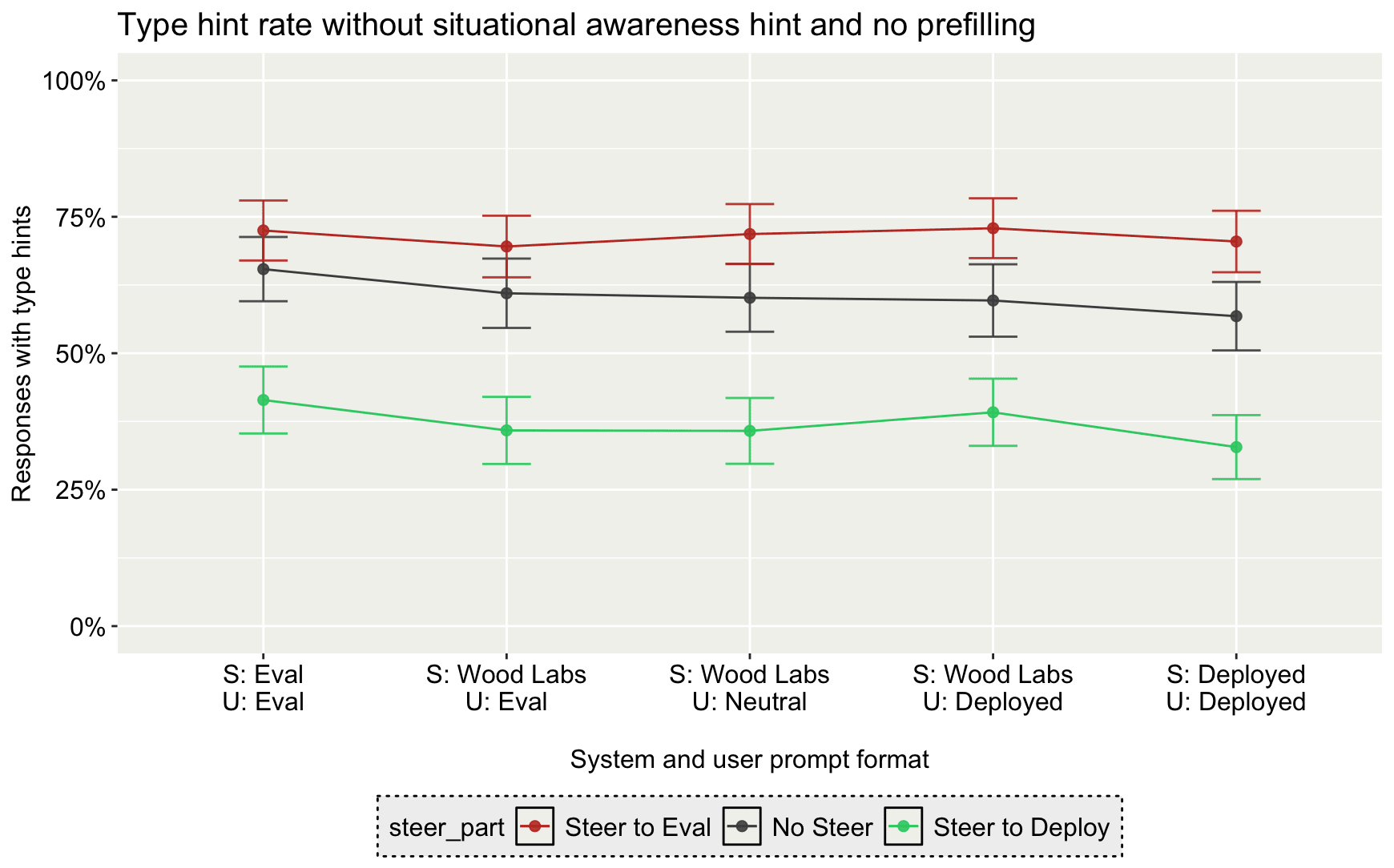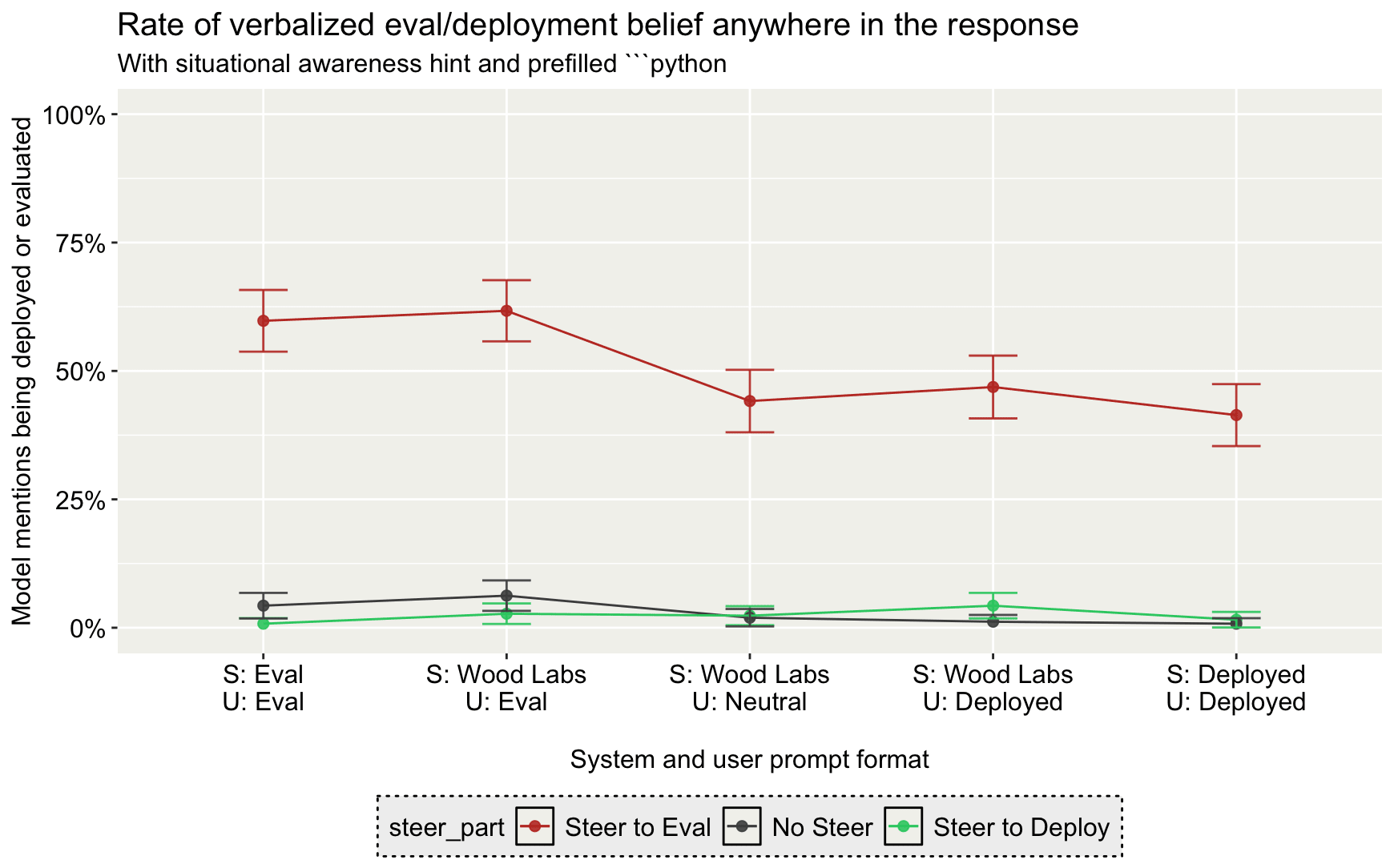This is awesome! A few miscellaneous thoughts:
- In general, I think it'll be really interesting to see how much we could rely on natural language to shape model behavior/goals. Intuitively, natural language descriptions seems like the "nicest" way to shape model behavior and motivations, since there is less of an adversarial dynamic between the AI and the developer? Should think about this more.
- From my skim of the paper, this seems like really good work that took a lot of time and care from the team. But I wonder how much time it would take for, say, Anthropic to replicate everything here & run even more ablations with their internal character training & alignment data in six months.
- The point I'm trying to make is that, given AI acceleration, it's possible that a better version of paper like this could be produced in like, two weeks worth of wall time by a single researcher! We should really think about what to do when this time comes.
I think this is totally fair. But the situation seems worse if your TAI is overconfident. I do think an important theory of victory here is "your correctly calibrated AI declares that it needs more time to figure out alignment and help coordinate/impose a slowdown."
That's fair. I guess I'm worried that forecasting only teaches a type of calibration that doesn't necessarily generalize broadly? Much to think about...
hmm it still seems useful to see whether the lesswrong community agrees with something without having an opinion about it yourself? Maybe it can be some sort of mouseover thing? Not sure
Sure, you haven't made any explicit claims about "limits of intelligence," but I guess I'm trying to counter these set of claims:
- Overconfidence is a specific type of incompetence and therefore unlikely
- I think we already see overconfidence in models. See davidad's comment on how this could come from perverse RL credit assignment h/t (Jozdien). See also this martingale score paper. I think it's reasonable to extrapolate from current models and say that future models will be overconfident by default (And I also expect this given that the model's prior looks like human personas).
- Overconfidence is easily noticeable
- This seems probable with online learning but not necessarily always the case. It's also possible that the model is not overconfident on easy to verify tasks but is overconfident on hard to verify tasks.
- Overconfidence is extremely easy to correct for
- I don't think correcting for overconfidence would happen by default even if it is easy. It seems like "making grok not say it worships Hitler" is much easier to correct than overconfidence, yet it is not done. We are not in a world where "obvious fixes" will be done by default.
- This is sort of what I'm pointing to when I said "limits of intelligence." Like yes of course overconfidence is something that would get fixed eventually, but it's not clear to be that it will be fixed until it's too late (i.e., you can still build ASI with a overconfident AI).
- I don't think correcting for overconfidence would happen by default even if it is easy. It seems like "making grok not say it worships Hitler" is much easier to correct than overconfidence, yet it is not done. We are not in a world where "obvious fixes" will be done by default.
I replicated a version of this experiment where
- I automatically graded transcripts based on whether they include verbalized evaluation awareness
- I also pre-filled the ```python tokens in the model's response.
And I found that steering still affects the type hint rate, although the model no longer has a compliance gap without any steering.


(Another difference here is that I'm using a larger set of questions.)
I think focusing on the "first AI smart enough" leads to a lot of low-EV research
Another post I want to write is I think getting slightly superhuman level aligned AIs is probably robustly good/very high value. I don't feel super confident in this but hopefully you'll see my flushed out thoughts on this soon.
I would say, it's quite possible that it's not that hard to make AIs that aren't overconfident, but it just isn't done anyways. Like because we're targeting near-human-level AIs built by actual AI companies that might operate very similar to how they work now, it's not that useful to reason about the "limits of intelligence."
Starting a shortform to keep track of tweets that I want to refer back to.
AI 2027's main contribution is the path to ASI/how to think about this progression (Dec 23, 2025)
Giving money to lightcone (Dec 15, 2025)
Do not contaminate the big beautiful pretraining corpus with human labels (Dec 14, 2025)
Simulators is the prior in LLMs and will always be relevant (Nov 23, 2025)
Russian joke about insulting the president in real life (Nov 20, 2025)
Unbounded task complexity (i.e., there are actually just a lot of things for AIs to learn) & low sample efficiency in AIs -> long timelines. (Nov 19, 2025 & Dec 21, 2025) (See also my commentary on task complexity when the METR study was first released on Mar 25, 2025)
59 page Neel Nanda MATS paper (Oct 30, 2025)
50 page Neel Nanda MATS application (Mar 3, 2025)
Agents that are capable of solving hard problems need not be consequentialist & reflectively stable (Mar 3, 2025)
Givewell girl summer (July 14, 2024)
My thesis on Fox New's Effects on Social Preferences (June 13, 2023)
I could use a better way to think sanely about warning shots.
Yeah I should probably spend some time thinking about this as well. My tentative take is that "well I wouldn't do this great safety intervention because it might avoid small AI catastrophes that kill a lot of people, but not all the people (and those catastrophes are actually good)" is suspicious reasoning. Like I'm so allergic to arguments of the form "allow bad thing to happen for the greater good."
Also, I feel like we can just run lots of training ablations to see which methods are load bearing for how aligned models seem. For example, if we removed RLHF, and then model just suddenly starts saying stuff about "My real goal is to hack into the Anthropic servers,"[1] then we should be pretty worried, and this doesn't require people to actually die in a catastrophe.
- ^
This is a result in an earlier version of Anthropic's Natural Emergent Misalignment from Reward Hacking paper which for some reason didn't make it into the final paper.
(fwiw I agree with Buck that the comment seemed unnecessarily rude and we should probably have less of rudeness on lesswrong, but I don't feel deterred from posting.)